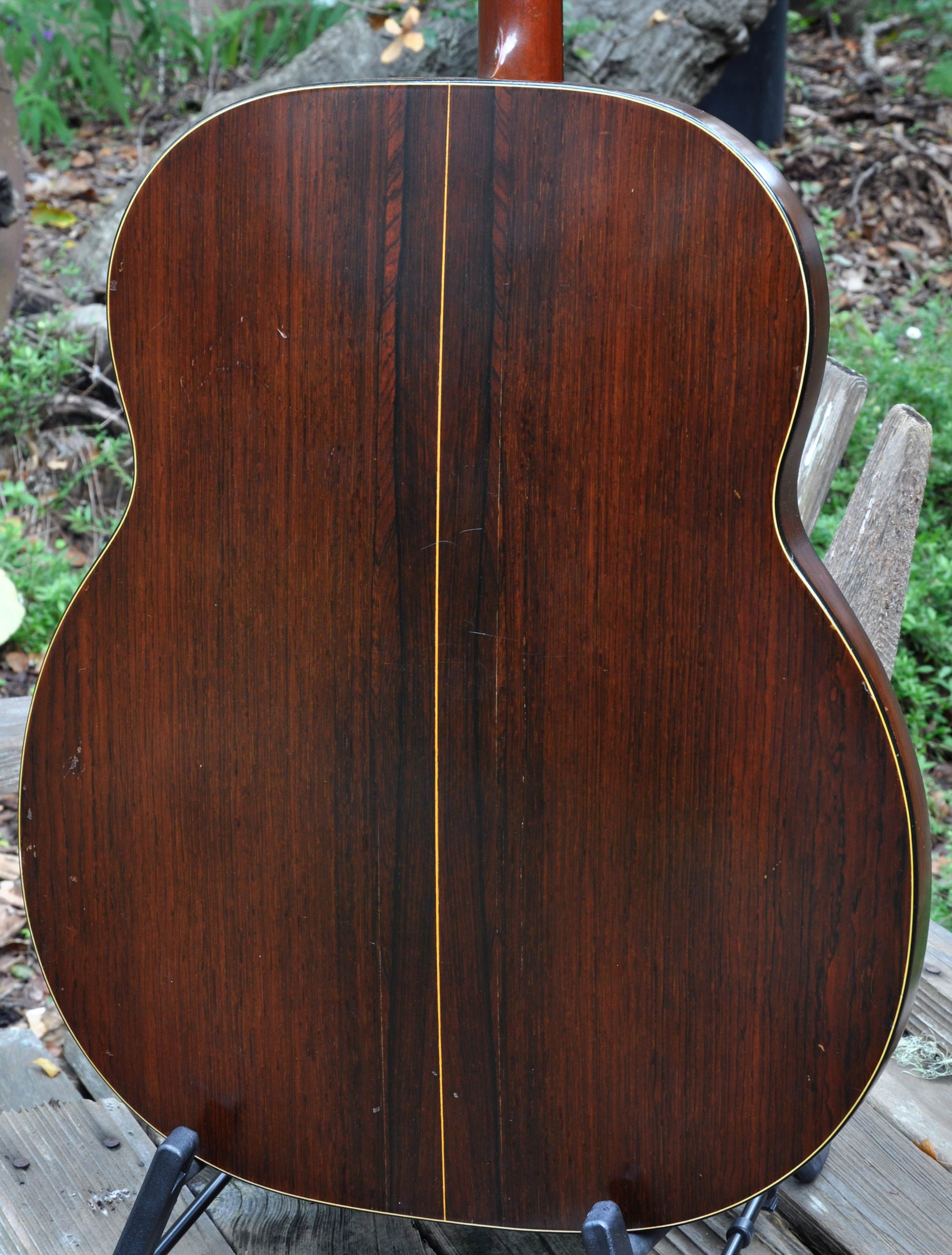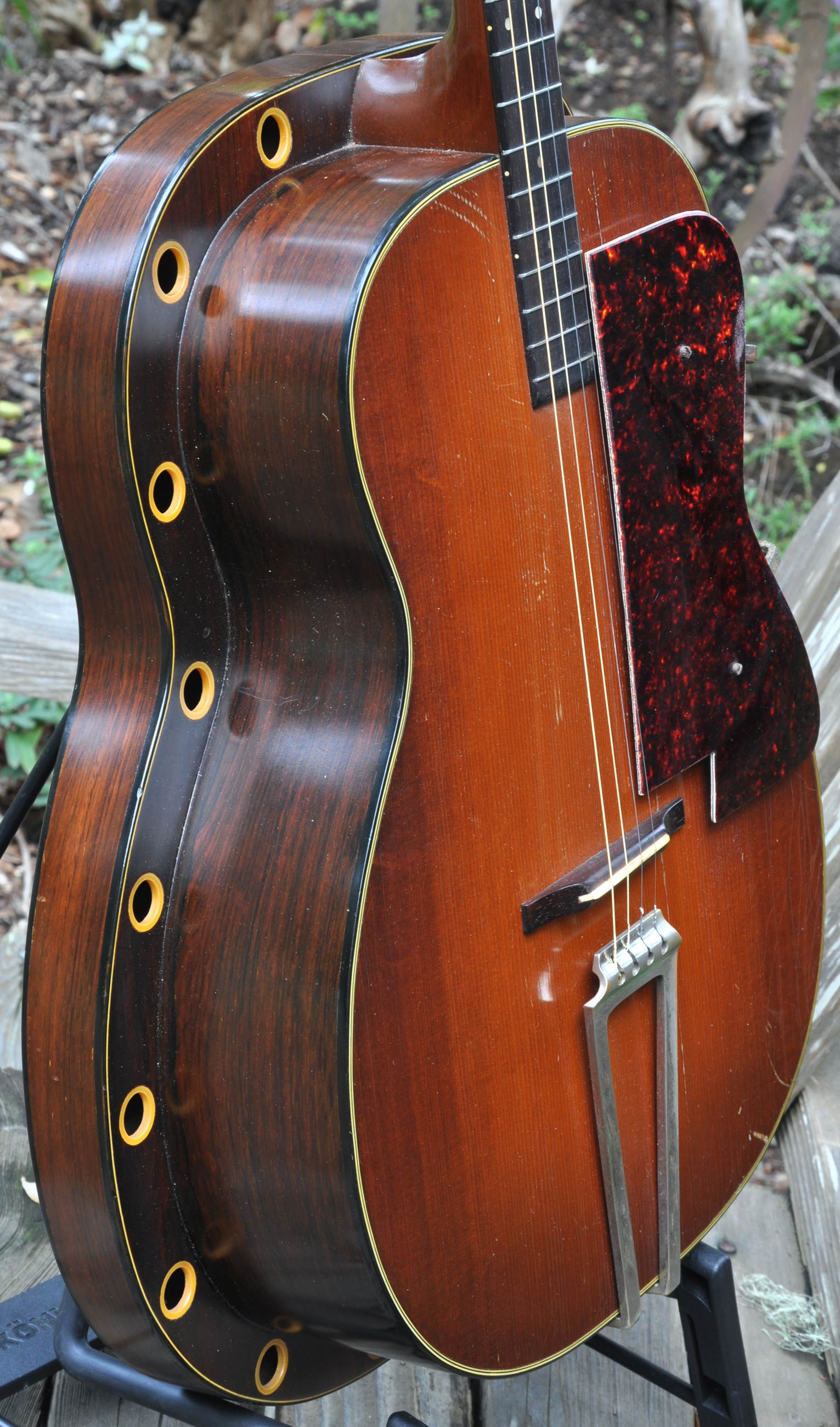The Paramount Style L guitars are far more complicated and interesting than previously thought.
Style L guitars are often discussed as one type but occur in two completely different designs: a six-string guitar and a tenor guitar. The Spanish-style six string guitars have a size 2 guitar shape as the inner body while the resonator width is the same as a size 0 guitar. The tenor guitars have a totally different shape as the body length was reduced in order to accommodate a 14 fret neck with the shorter tenor scale. The bottom of the fingerboard on the tenor guitars is also located closer to the sound hole than the Spanish guitars.
As well, style L guitars are known with and without a sound hole, with a tailpiece or with a glued-on bridge, different number of holes in the resonator rim (18 for the tenor guitars and 20 or 38 for six string guitars) and with natural or shaded tops.
Some of the Style L guitars with sound holes have no decoration around the hole at all while others have a white celluloid ring circling the inside edge of the hole.
In 1930 William L. Lange Music Co., manufacturer of Paramount banjos, contracted with C. F. Martin & Co. to make some special guitars of Lange’s own design. Lange marketed them as Paramount Style L guitars and they were available as either 6-string Spanish guitars (with regular or Hawaiian set-up) or as 4-string tenors.
The first batch was stamped in October 1930 and the Style L guitar, in several variations, continued in production until mid-1932.
Martin always referred to these internally as “Paramount 0-21” even though the peg head veneer, supplied by Lange, identified them as Paramount “Style L” (one “Model L” veneer is known).
A total of 72 Paramount 0-21 guitars were built although only 71 were ordered. The discrepancy occurred in the first batch where three were ordered but four made, the extra guitar was most likely a prototype or a sample instrument.
Martin did not record serial numbers for these guitars as the serial numbers were applied by Lange. A “PATENT PENDING” stamp was also added by Lange and appears on the back of the headstock or on the rim of the resonator section at the bottom of the guitar. The serial numbers on examined Style L guitars vary from 101 to 160 which fit well with the number ordered. It will probably be found that the serial numbers range from 100 to 170.
Style 21 features:
Back and sides: Brazilian rosewood
Top: Red spruce (Adirondack)
Purfling: Celluloid lines
Binding: Black celluloid
Shaded top finish
No sound hole
Unlike other style 21 models the Paramount Style L guitars did not have a herringbone sound hole ring or a strip of herringbone for the backstripe.
20 holes in resonator rim
Other period features:
Scalloped X-bracing
Ebony fingerboard
Ebony adjustable bridge
Dot fingerboard inlays
Pearl Paramount Style L veneer on front of headstock
PATENTS PENDING stamped on resonator rim at bottom of the guitar
Photos courtesy of Players Vintage Instruments










One thought on “1931 Paramount Style L Guitar, Serial Number 160”
I never knew of the variety of instruments that the Martin Company made. This is an excellent example of an instrument that I had no idea existed, let alone that Martin made it. I guess it was quite expensive but wonder about the tone. Also from the number made, I assume that it was not popular. Then here we are making a complex instrument as the country is sliding deep into the depression!
Can one imagine the Martin worker coming home from the difficult task of forming the components of the guitar all day to the headlines about the food lines, so many unemployed, and no sign of a recovery as the economy only went down further from this day for a number of years. I believe a guitar for many is a luxury item. It probable was Martin’s reputation for quality that helped it to survive. How do I know this, in 1945 when my father earned $900 as a minister, he paid one tenth of his income to buy a
D-18 with the cheapest fabric case. And he had four children to pay. I once asked him how he afforded to purchase such a guitar when the family was in such dire straights? He said the best will last a lifetime. I also believe his mother chipped in and that is how he was able to swing the purchase. And here 75 years later the families third generation still plays that guitar!